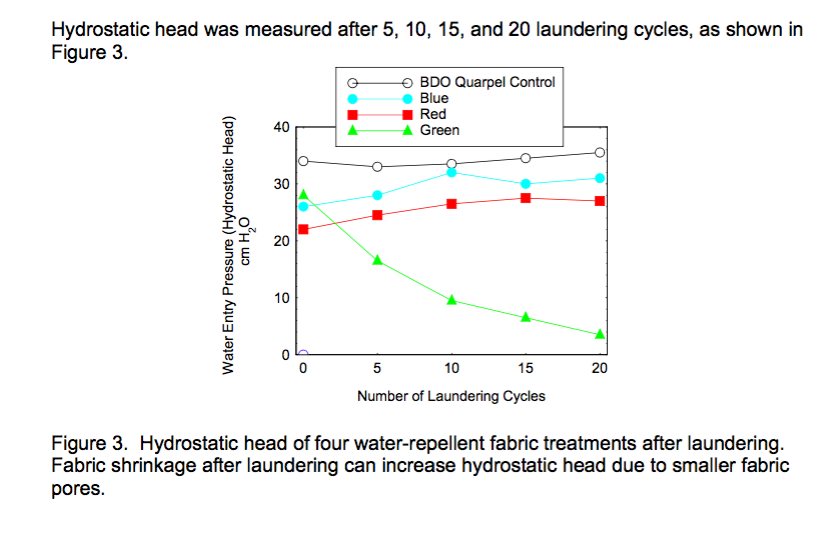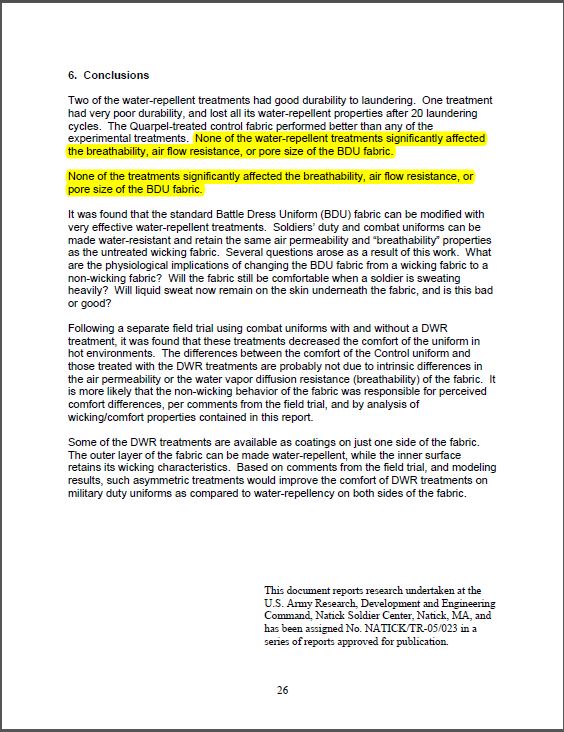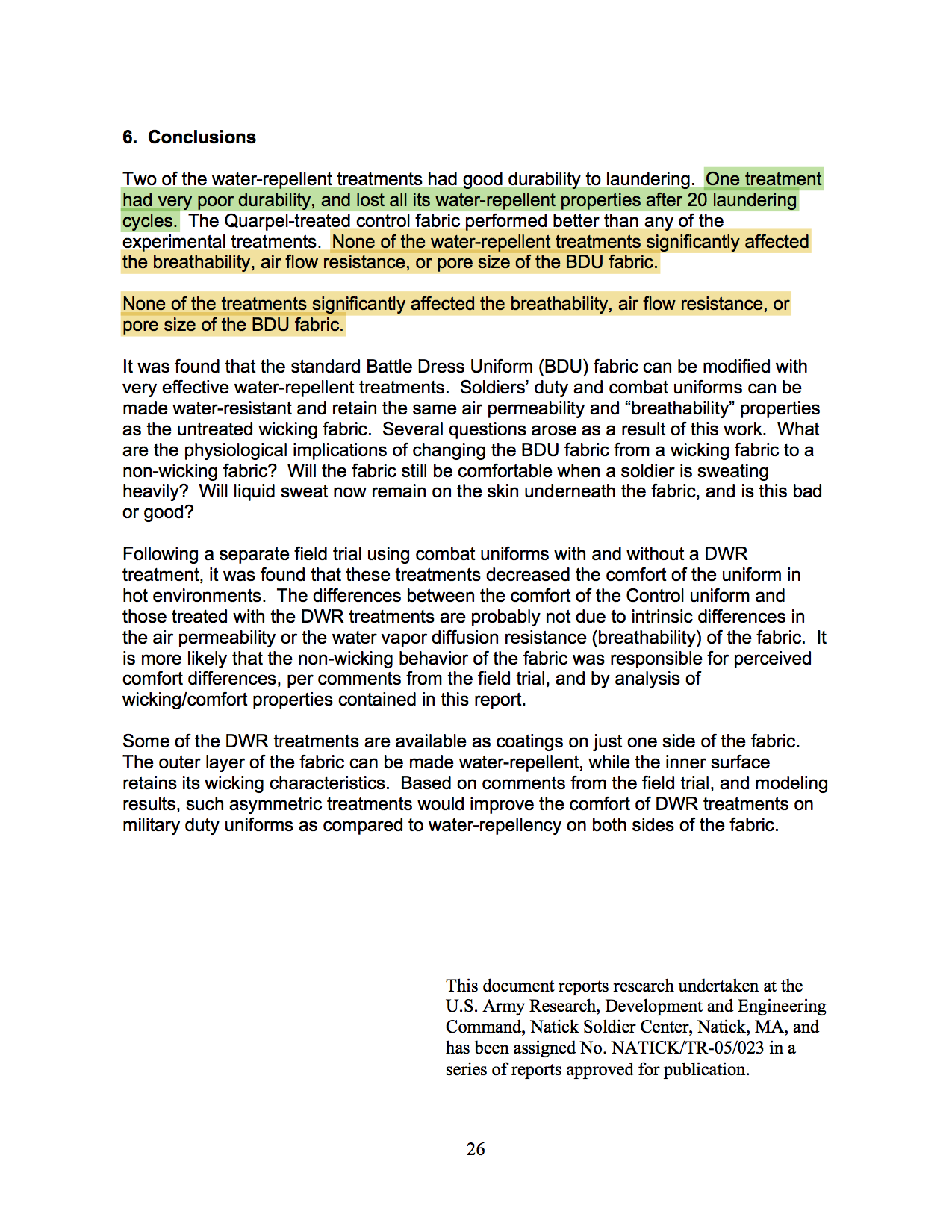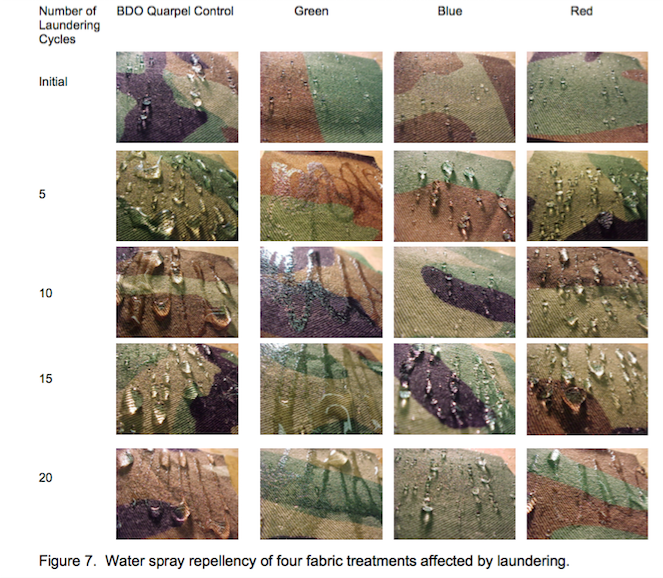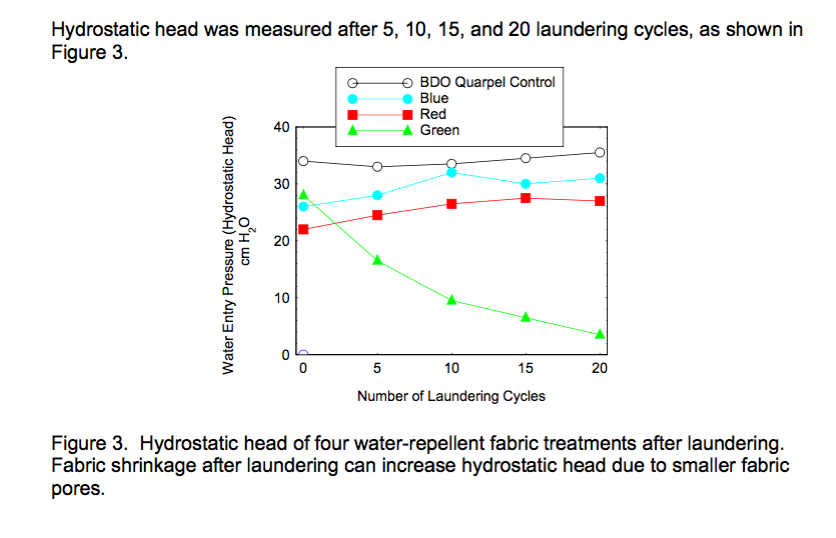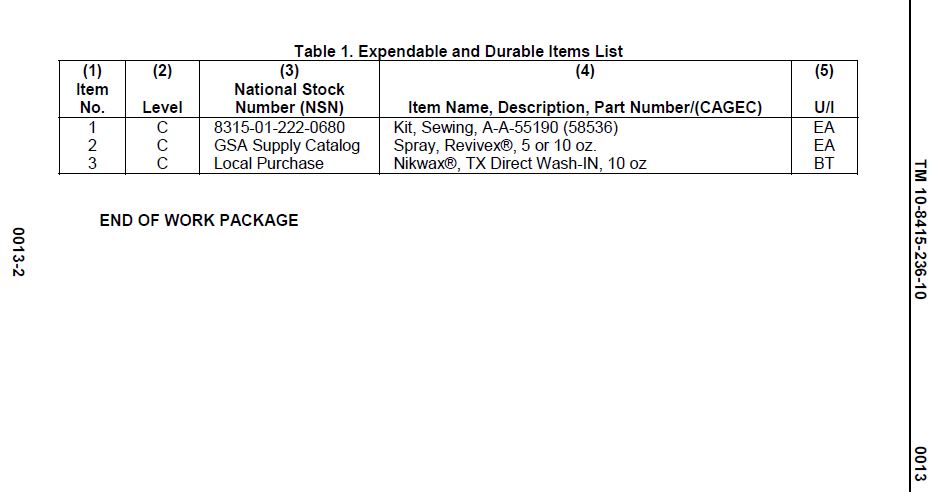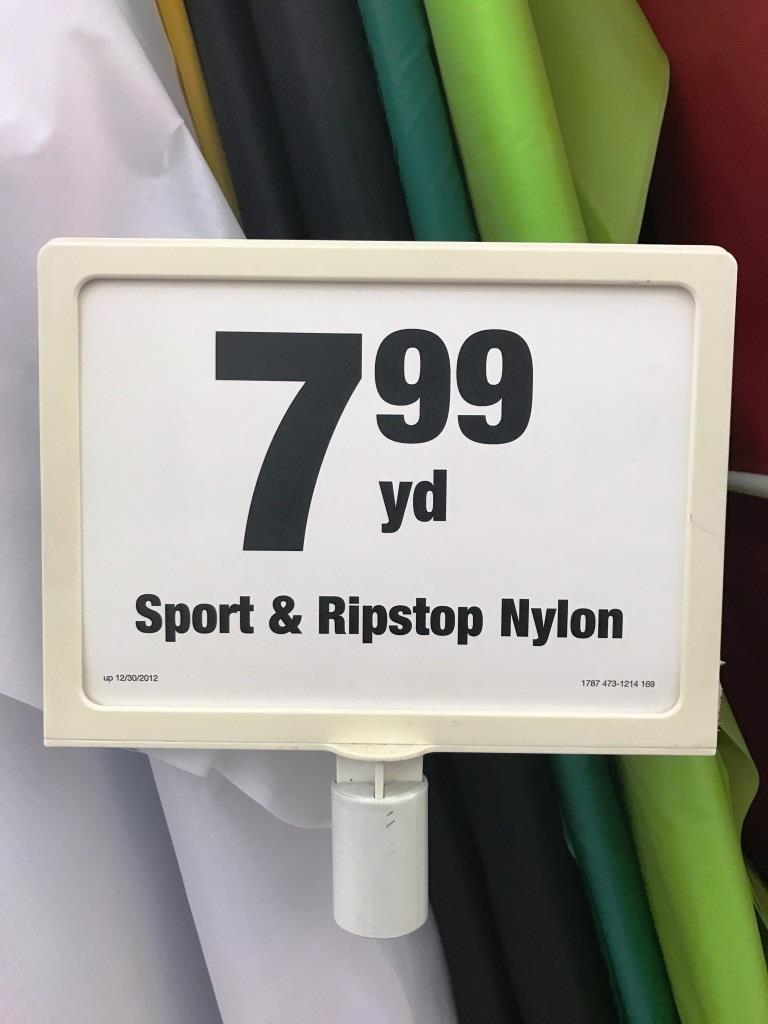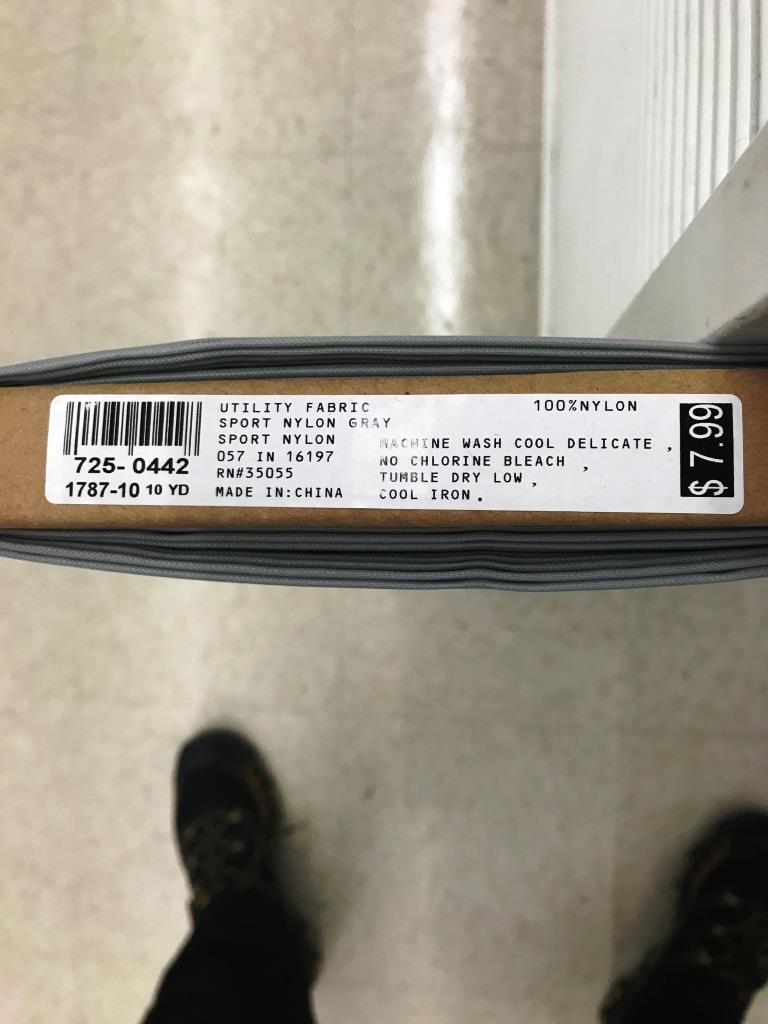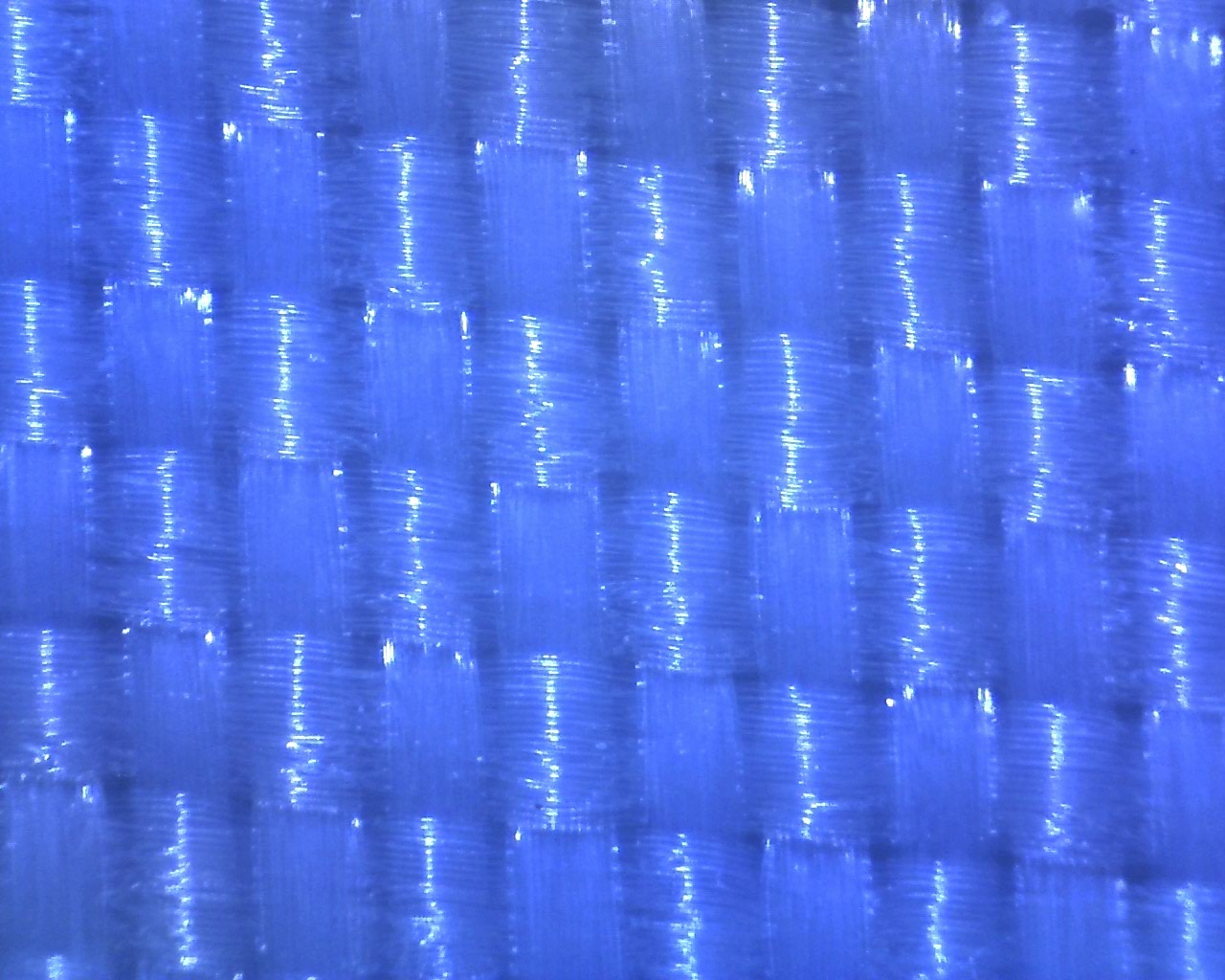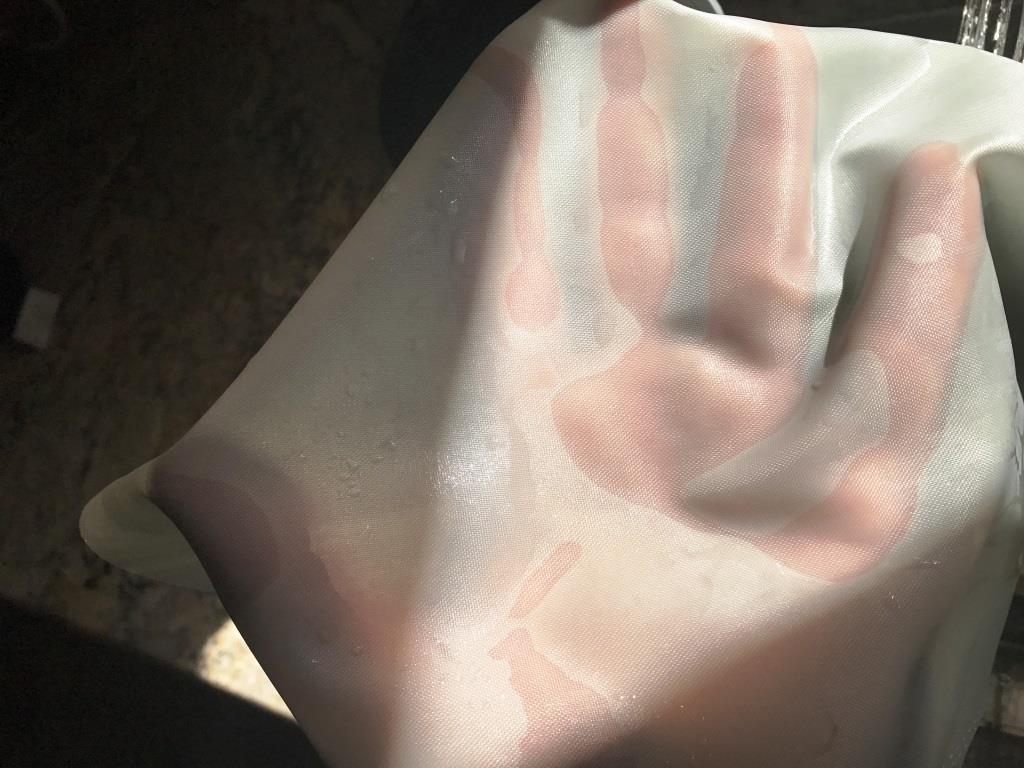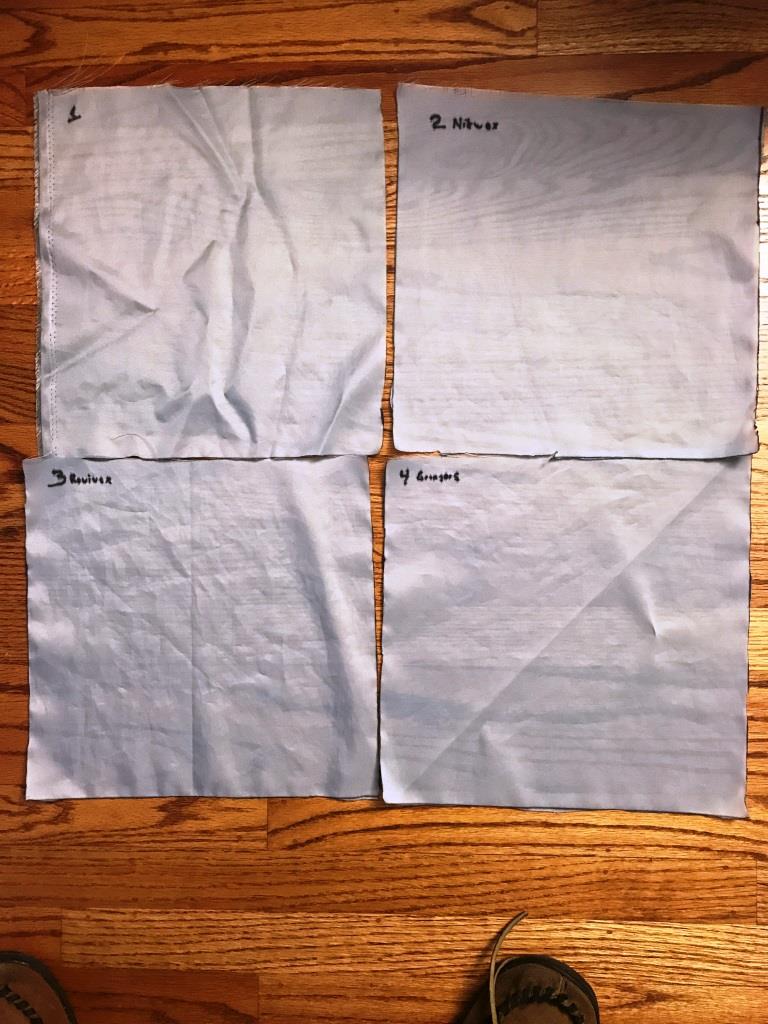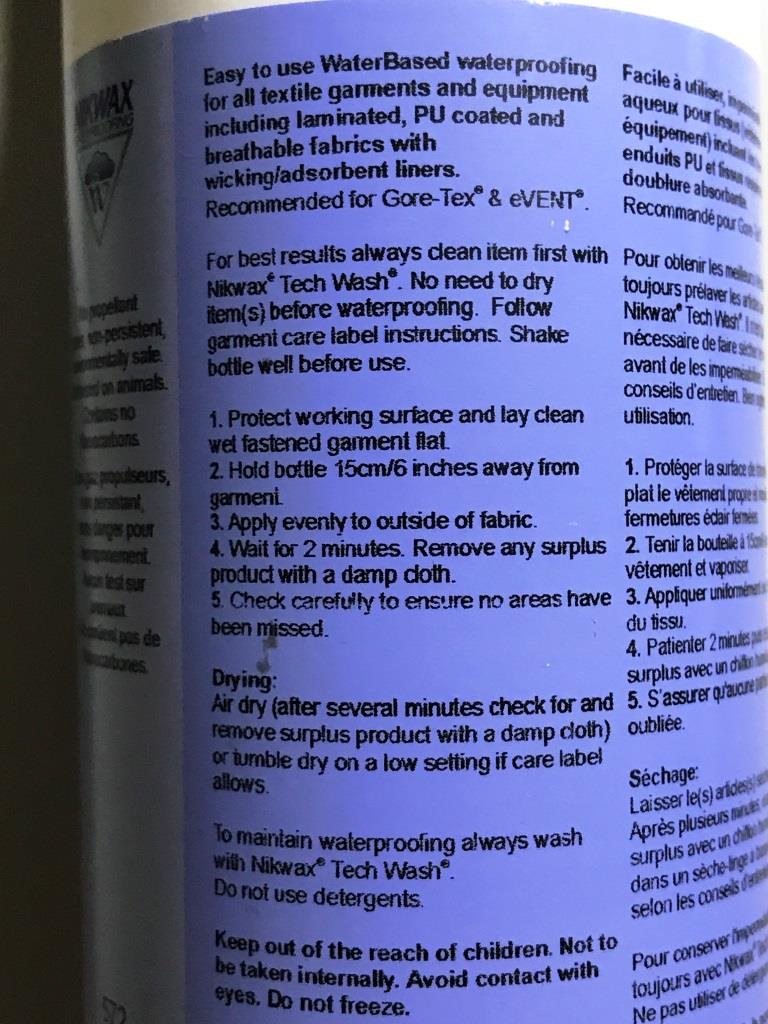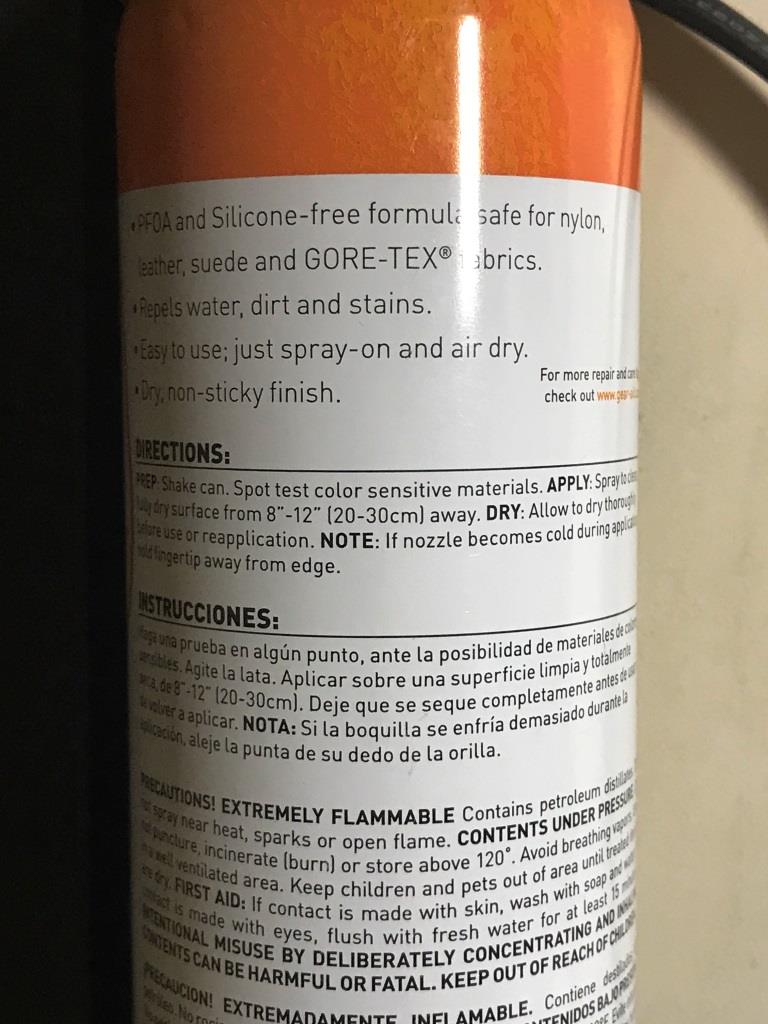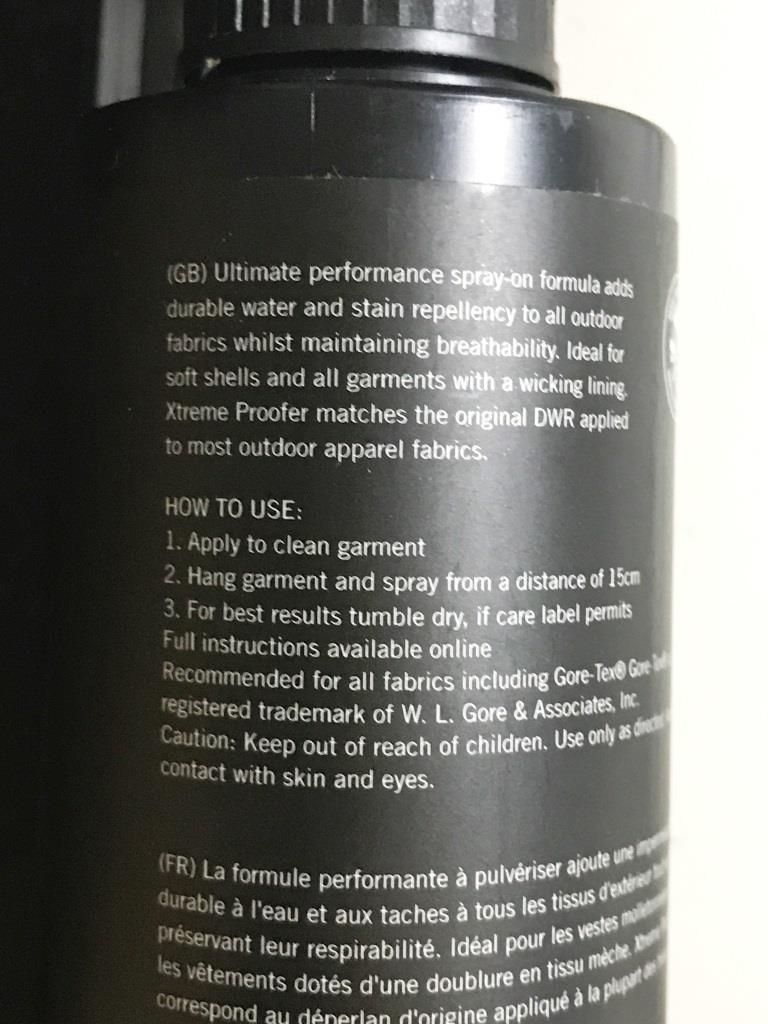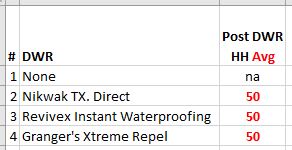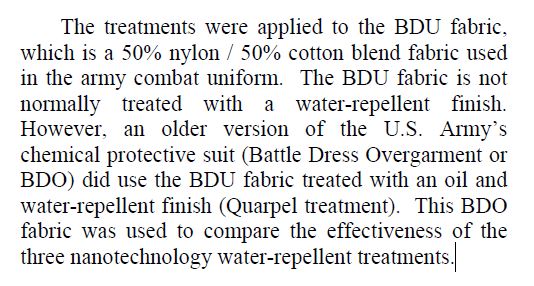Topic
A good alternative to WPB gear for ACTIVE backpacking
Forum Posting
A Membership is required to post in the forums. Login or become a member to post in the member forums!
Home › Forums › Gear Forums › Gear (General) › A good alternative to WPB gear for ACTIVE backpacking
- This topic has 367 replies, 46 voices, and was last updated 6 years ago by
 Stumphges.
Stumphges.
-
AuthorPosts
-
Mar 31, 2017 at 3:55 am #3460715
@Steven, since you didn’t formulate the question, I may be misunderstanding you. You were under the impression that water was sipping in through the hood? Possible. Looking at the dampness in the Cap 4 may have provided a clue as to whether the water was coming down from the hood into your shoulders, back and chest. Was your hair significantly wetter? It’s also possible that since you didn’t have the insulation provided by the Cap 4 that you were just a little cooled by the rain on the hood area…
Another possibility, and bear with me on this rather embarrassing point, have you put the fabric under the light? I ask because the rain jackets I have had to retire were because of hood failures. I noticed that the fabric hoods in my rain jackets was wearing rather prematurely compared to the rest of the coat (Marmot Precip & Some other one before I don’t recall). If I picked it up and put it to the light I could see how the fabric was weak and worn out. This was despite the fact that the hoody was worn significantly less than the rest of the coat, as often I would wear the coat without the hood, and it probably suffered less direct abrasion. My unproven, unscientific guess to the cause of this was that since my hair is really oily this condition had somehow decomposed the material in the hood area.
So bring the coat to the light and see whether the fabric in the hood looks like the same condition as the rest of the coat.
Mar 31, 2017 at 5:47 am #3460721Richard,
Thank you, and also for pointing to the 2006 Natick report on DWR.
Mar 31, 2017 at 6:45 am #3460727As far as the hood, I had a similar experience the other day trail running- light, steady rain (about 45-50 degrees) wearing a light long sleeve base layer and an older Houdini- after a hour and a half my base layer was pretty dry (the Houdini was pretty damp)- my head/hair however were pretty wet. The next evening almost identical weather, this time I wore a light “baseball” cap under the hood- much better at keeping moisture off my head. It also improves your view out of the hood :)
I think Richard’s explanation (Newton’s) is what the difference was. A base layer hood may have worked, but would have simply been too warm.
Mar 31, 2017 at 6:53 pm #3460848Richard, am I understanding you correctly? I believe you stated that the presence or absence of DWR does not influence hydrostatic head (water resistance) of a woven fabric.
The paper by Gibson at Natick you mentioned seems to show otherwise.
In Natick/TR-05/023, the uncoated woven fabric of the BDU was compared with the same fabric treated with the military’s fluorocarbon ‘Quarpel’ DWR. Same fabric, one with DWR (BDO), the other without (BDU).
Both fabrics had the same pore size (from Fig. 10):

But the untreated fabric had no water resistance (“Sample wetted out, no hydrostatic head”), while the Quarpel-treated fabric demonstrated a hydrostatic head of ~340mm (from Fig. 2):

Gibson also compared the Quarrel BDO fabric with three other samples of the same fabric that had been treated with three different nanotech DWRs. These specimens were then washed multiple times to simulate wear and abrasion. The water-resistance of the Quarpel fabric, as well as the “Blue” and “Red” versions of the same fabric (treated with unnamed nanotech DWRs), remained fairly constant, while the DWR applied to the “Green” sample degraded significantly after repeated washing and the hydrostatic head decreased accordingly, going nearly to zero after 20 laundering cycles:

These results indicate to me that DWR-dependent water-repellency is necessary for a fabric to possess high water resistance (entry pressure). Am I missing something?
Apr 1, 2017 at 1:40 am #3460912The following is Dr. Gibson’s research summary on page 26 (page 33 from the beginning). I will try to investigate why, it appears as if his conclusions and yours don’t match.
In the meantime, please do a simple test to answer your question first hand. Take one of your cotton shirts and place it cupped in a bowl. Pour in two cups of water and then lift the item from the bowl while cupped. It should be a 0 HH item per equivalence to the Gibson test and should result in the water immediately passing through the fabric without having to squeeze. If your particular shirt needs additional force for the water to pass through, an average male can exert up to 1,200 mm HH by progressively twisting. Note the approximate force it took for the water to pass through without DWR. Next treat the item with any commercial DWR, according to the manufacture’s instructions, and repeat the above HH change observation test. Please post your test results.
 Apr 1, 2017 at 4:13 am #3460917
Apr 1, 2017 at 4:13 am #3460917Curious as I got, I decided to read the Natick-paper again.
Now first about the DWR-effect on the HH:
fig. 4 (p5)
fig. 6 (p7)
As you can see, there is a clear effect.
Now, about the differences in conclusion: well, I’m not sure there are, in fact, differences. Here, we talk about the effect DWR has on the HH while in the paper they eventually talk about whether the DWR has or has not an effect on the porosity of the tested fabric. Two different things.
It seems logical that there is a positive correlation between the pore size and the HH of a fabric. But, in that case, there are only two factors. In this case, there are three: pore size, the HH and the DWR. Different thing. And I haven’t seen a study (yet) that researches the relationship between those three.
Apr 1, 2017 at 8:22 am #3460938Woubier, I posted the pore size graph before the HH graph in the post above to illustrate the point you raise – the pore size is identical between the DWR fabric (BDO) and the untreated control (BDU), and yet the former has hydrostatic head of greater than 300 and the latter hydrostatic head of zero. DWR and surface tension aside, one would think that water resistance would correlate highly with pore size. If two fabrics are identical, with identical pore sizes, and yet display radically different resistance to water pressure, there must be another factor. In the paper that factor appears to be the presence or absence of DWR treatment.
Richard, I’ve got an old pair of tightly woven cotton/nylon pants that might roughly approximate the BDU fabric. I’ve also got a can of C8 DWR. What I don’t have, living in the city, is a convenient workspace to spray chemicals, so it may take me awhile to execute the experiment. Thanks for proposing it.
Regarding Gibson’s conclusion, it seems that I’m focusing a few sentences back (green highlight) from where you are (yellow highlight):

My focus is on that sentence because the data appear to show that as the water repellency (spray rating) of the Green DWR-treated fabric declines upon repeated washing…

…so does its water resistance (hydrostatic head):
 Apr 1, 2017 at 11:36 am #3460966
Apr 1, 2017 at 11:36 am #3460966I’m far from a scientist but it appears to me that you’re all miss taking what Richard stated. These tests go from zero HH to something slightly above but still basically zero. Richard stated you need something with 300hh and in that level the dwr doesn’t make a difference.
Apr 1, 2017 at 12:42 pm #3460981Apr 1, 2017 at 5:02 pm #3461033Stumphges,
Ref your post #3460848
Both my test conclusion and Dr. Gibson’s referred to “commercially available DWRs”. Your conclusion refers to Quarpel; this is not a commercially available DWR. It is a proprietary US Military fabric treatment / coating developed in the 1960s which they began to phase out in 2002. It was used as a test CONTROL relative to the three types of commercial DWR’s that were evaluated; it is not one of the commercially available types of DWRs referenced in Dr. Gibson’s conclusion.
Apr 1, 2017 at 6:52 pm #3461042Richard,
The Green sample was one of three treated with “nano” DWR. It’s not explicit in the paper whether any of these were, or later became, commercially available. In any case, the Blue and Red fabrics did not significantly degrade upon repeated washing, neither in terms of water repellency (spray rating) nor hydrostatic head. The Quarpel control behaved similarly, although it was a bit better than the other two. For the purposes of this discussion, however, the Quarpel control is essentially irrelevant as its behavior is analogous to that of the Blue and Red fabrics: all three were durable and not subject to declines in either repellency or hydrostatic head.
However, the third sample, the Green one, did degrade: both water repellency and hydrostatic head declined following exposure to repeated abrasion cycles. It appears to me that these declines are closely correlated, and that the cause is DWR degradation. In the conclusion, Dr. Gibson refers to the Red, Blue and Green fabrics:
“Two of the water-repellent treatments [Red & Blue] had good durability to laundering. One [Green] treatment had very poor durability, and lost all its water-repellent properties after 20 laundering cycles.”
My view is that the Green sample is representative of what many of us have experienced as DWR failure – due to abrasion, fouling by body oils, or whatever – and that when a DWR fails a fabric will wet out and leak. I was under the impression that this is the point of using Epic/silicone-encapsulated fabrics – that their DWR will not fail under normal conditions and can be revived in the field even if it does.
Am I understanding your position correctly? Are you saying that fabrics with degraded/failed DWR will wet out but not leak, that repellency and hydrostatic head are independent/not correlated? I can’t see that Dr. Gibson’s data supports that view, although I freely admit that I could be wrong. Your knowledge and experience are much greater than mine.
Apr 1, 2017 at 10:19 pm #3461064Ref post #3460848, I had an explanation for Quarpel. But the “Green” HH degradation gives me pause.
I propose a BPL study involving more than one person to impose checks and balances as well as spread the work load. The objective of the study would be to determine how much, if at all, the currently fielded Natick DWRs increases the HH of representative non-DWR fabrics. The HH of two 1′ square non-DWR fabric samples would be measured. One of the Natick authorized DWRs would be applied to each fabric according to the manufacturer’s instructions. After drying, the HH would be retested for each fabric sample. These are the two currently authorized Natick DWRs:

Who volunteers?
Apr 1, 2017 at 11:39 pm #3461073Hi Richard
Good idea, but maybe you should provide the DWR-treated fabrics to everyone. That way we avoid the problems with differing treatment methods: they would be large.
Cheers
Apr 2, 2017 at 1:32 am #3461087actually its a lot simpler …
just take yr old worn windshirt and see if you can do a water cup test on the areas DWR has abraded out … ie the shoulders, sleeves and back …
refresh the DWR and see if it makes any difference in those areas … and also the areas with the least wear (chest, sides)
is it scientific? … nope … will it show if yr windshirt will leak as it gets worn .. absolutely
;)
Apr 2, 2017 at 3:48 pm #3461156Anonymous
InactiveHi folks,
Coming out of BPL retirement for a moment to contribute a bit this to this. Ok, clearly this is a very complex and controversial topic. But I like challenges. My solution to this problem took a bit from this, a bit from that, and combined it into one system.
I took some lighter weight silnylon fabric that didn’t test particularly well with HH–wasn’t even close technically waterproof (1500 mm), decided to make it a little more breathable by folding it up and poking some holes in it.
Then I combined it with some Tyvek 1443R. The above silnylon material was the outside material and the Tyvek was the inside material.
Then I made a slightly unconventional and very quick/easy to make semi-poncho out of the fabric combo.
I haven’t tested it since the CT trip, but it worked well during same. It’s not completely ideal–Tyvek 1443R isn’t the most durable material, but in this case, since it’s the inside material, it will last longer–basically wear will come most from abrasion against clothes. My ideal fabric combo would be two light layers of Epic treated (or similar) polyester fabric with a certain HH and CFM, or one layer of that combined with a light layer of tightly woven, light weight PP (polypropylene) fabric.
Awhile back, I contacted the Ripstop by the roll folks and suggested that if they could source some tightly woven, lightweight PP (polypropylene) fabrics, that this would be great as PP is hydrophobic and just barely low surface energy enough to not require a DWR.
People have misconceptions that polypropylene fabric is not particularly durable, because most of us are most familiar with non woven forms of same, such as in Frog Toggs. Those us with knitted or woven clothing made out of PP know that it is reasonably tough when well knitted or woven–especially so for it’s weight to volume ratio. I briefly had an interesting windjacket made out of PP, made by a British company. Unfortunately, they altered the PP fibers to wick and wick well and so didn’t work for my purposes. (it was also too breathable for a Paramo like application).
PP is pretty susceptible to UV damage, which why theoretically in such a system as above, it would be the inner layer and the outer layer would be polyester with silicone encapsulation–very UV resistant. There are ways to make it more resistant to UV damage.
Anyways, below is a link to this strange creation that has worked pretty well so far. Sort of like the poor person’s, more durable, more breathable version of the new no DWR Goretex jacket. Fit and fashion of it certainly could be improved, but as long as it blocks rain and breathes well, that’s all I care about. Again, if I had access to better and more controlled fabrics, I would go with those, but I wanted to keep it light and inexpensive and so went with the above.
https://backpackinglight.com/forums/topic/oddunique-but-very-breathable-rain-gear-system/
Apr 2, 2017 at 4:03 pm #3461157Anonymous
InactiveAlso a quick p.s. to the above. Any such system as the above, would still occasionally need to be heavy duty “de greased”, and regularly rinsed well. There are not too many substances which are a combo highly hydrophobic, low surface energy, oleophobic, and durable. Actually, don’t there is any that fit all 4 criteria at the same time?
Polypropylene, EPIC type treat polyester or nylon, polyethylene based Tyvek stuff, and Teflon materials all absorb some oil if I remember correctly, which means the more oil accumulates, the more other gunk will stick to same, which increases surface energy and lead to wet out.
But until we obtain unobatainium (which who knows, may actually happen), some combo of one or more of the above, will work reasonably well when the HH and CFM of each layer is well dialed in, and you realize that very occasionally you’ll have to degrease it and otherwise rinse it with clean water often.
If they can ever get UHMWPE fibers down to small enough size, I think that material holds great promise as being the outer shell material of such fabrics. Heck, I think I would be ok with a 50D version, if I could combine it with say a 20D version of PP or Silcone treated nylon or polyester fabric.
Furthermore, in really nasty conditions, I would combine such outer wear jackets or especially ponchos, with a combo of PP based fishnet baselayer, and then a thin, well wicking polyester baselayer on top of that.
The combo of all the above, might give us the best of all worlds for most wet conditions. By all means though, throw\ some Cap 4 or regular fleece into the mix if it’s cold enough, but it would have to be pretty cold for me to wear all that.
Now if we could just get rid of stink in relation to PP…. (still haven’t tried treating my PP fishnet baselayer with the essential oil infused coconut oil).
Apr 2, 2017 at 9:36 pm #3461199I wanted a test fabric that was typical of what would be used for bushwhacking at an aerobic pace so as to not deviate too much from the BDU fabric Natick tested with. Armed with a folded coffee filter to ascertain the breathability, I drove a few miles to my local Jo Ann Fabrics store and tested fabrics until I found one that seemed to be appropriate.

My selection criteria wa similar to what a DIY person would select to build a bushwhacking windshirt optimized for aerobic use. I wanted a taffeta as apposed to a rip-stop to maximize any possible DWR HH improvement.


60x magnification of test fabric
The information I needed to see if viable was determined after I brought it back and tested it to find: no DWR, .159mm thick, 70 denier fibers, 70.71 CFM, and 0-50 mm HH (0 mm avg).

I ran the fabric under my faucet sprayer and it wet out immediately. It was an important selection criteria to be void of DWR.

I cut out four 1’sq samples and clearly labeled them. I washed all of the sample is non-detergent soap per the DWR instructions. I will later apply a different DWR to the back side of each sample per its associated DWR instructions.

The two Natick recommendations and what I typically use.

Nikwax TX. Direct instructions.

McNett Revivex instructions.

Granger’s instructions.
 Apr 2, 2017 at 10:00 pm #3461200
Apr 2, 2017 at 10:00 pm #3461200Does anyone on this forum think they know what the results will be and have the ability to explain why? (smile)
Apr 2, 2017 at 10:29 pm #3461202I thought DWR treatment was to renew an existing DWR,
not to put on non DWR fabric
I don’t remember where I read that
Apr 2, 2017 at 11:56 pm #3461214Jerry,
You may be partially theoretically correct (smile).
I read one user post on a UK forum that said there was an issue if the fluorocarbon was worn off rather than just degraded but, I have not seen any peer reviewed scientific literature to support that position. Most importantly, in the Gibson DWR research study relevant to this test, all the DWR types were applied to BDU uniforms (nylon/cotton) which are not manufactured nor issued with any DWR.

Waxes or silicones bond equally well to virgin fabrics as well as diminished DWRs of the same type (wax to wax or silicone to silicone). I have not read any user post where there was an issue.
Apr 3, 2017 at 12:05 am #3461215But do not ever try to put a fluorocarbonn DWR over a silicone-treated fabric, or silicone spray over a fluorocarbon DWR treated fabric. They will NOT bond to each other!
Cheers
Apr 3, 2017 at 1:58 am #3461219since all our windshirts come with factory DWR … the proper test would be to take commercial fabrics from windshirts wear em out till the DWR is gone …. then test em
after all we do wear our windshirts and abrade em … which is how our DWR wears off … i suspect few of us have a new windshirt without DWR
the wearing out of DWR does not happen by itself …
;)
Apr 3, 2017 at 5:45 am #3461223Richard,
Many thanks for taking the time to conduct these tests!
Regarding the untreated, straight-back-from-shop state, did the HH test around 70mm? I believe Dr. Gibson scored untreated BDU fabric 0 HH, writing that it wet out immediately.
Justin,
Thanks for joining this discussion:) I contacted Dyneema some years ago asking about woven UHMWPE. a 40D, 35 CFM Dyneema windshirt, stronger than steel, naturally hydrophobic, no DWR required. Ultralight, weather-shedding chainmail. Sounds great! Alas, they told me that it is too stiff to make a microfiber weave with – the fibers would snap making sharp the sharp turns in a tight weave. I was told that 400 denier was the finest woven they could make. This was in 2010.
Apr 3, 2017 at 5:50 am #3461224First: @Richard: from when is the Granger’s bottle because they used to used to FC’s but not anymore it seems since the introduction of their Acrylic Polymer Technology.
Second: about the effect of DWR on HH: well, a solid material has a certain surface energy with for e.g. Polyamide-6,6 or PA-66 (or Nylon 66) 46,5 mN/m, Polyethyleneterephthalate or PET (the most well-known Polyester) 44,6 mN/m, Polypropylene or PP 30,1 mN/m and Polytetrafluoroethylene or PTFE (Teflon™) 20 mN/m. In liquids, we talk of surface tension with for water ± 70 mN/m. If a value is below the value of water, it will be harder for water to spread over the surface. The further below that value, the harder it will be and thus the more hydrophobic that surface will be. The difference between the values of Nylon 66 or PET on the one hand and that of water on the other hand explains why they need a dedicated water repellant. Now, the surface energy/tension of the DWR’s are not exactly known as it depends on their chemistry but in general let’s say a silicone-DWR has a tension of 25-30, a hydrocarbon-DWR (like e.g. Nikwax) 18-22 and a fluorocarbom-DWR ± 10.
Now, associated with this is the contact angle, that is the angle between a droplet of water sitting on a surface and that surface. When that angle is below 90°, we call that surface hydrophilic; above 90° we talk of hydrophobic with above 150° hyperhydrophobic. The higher the angle, the harder it will be for that droplet to spread over the surface. So a baselayermaterial, that is supposed to wick, has a low angle while surfaces treated with a DWR have a high angle. The link to HH is then that waterdroplets on surfaces treated with a DWR will have a hard case to spread over the surface and to flow into the pores of that material e.g. a textile. The DWR will help that droplet to ‘bridge’ the gap created by that pore. The droplet can still flow into the pore but needs a higher pressure to overcome that DWR. We express that higher pressure here as the HH; the higher the pressure needed, the higher the HH will be.
Now, perhaps you think otherwise but actually this is still a pretty simple explanation. In reality, it is though even more complicated.
The big question for me is now: is my thinking wrong somewhere ? Or not ?
Apr 3, 2017 at 6:30 am #3461226Hi Woubier
Close enough, close enough.
Cheers
-
AuthorPosts
- You must be logged in to reply to this topic.
Forum Posting
A Membership is required to post in the forums. Login or become a member to post in the member forums!
Trail Days Online! 2025 is this week:
Thursday, February 27 through Saturday, March 1 - Registration is Free.
Our Community Posts are Moderated
Backpacking Light community posts are moderated and here to foster helpful and positive discussions about lightweight backpacking. Please be mindful of our values and boundaries and review our Community Guidelines prior to posting.
Get the Newsletter
Gear Research & Discovery Tools
- Browse our curated Gear Shop
- See the latest Gear Deals and Sales
- Our Recommendations
- Search for Gear on Sale with the Gear Finder
- Used Gear Swap
- Member Gear Reviews and BPL Gear Review Articles
- Browse by Gear Type or Brand.



